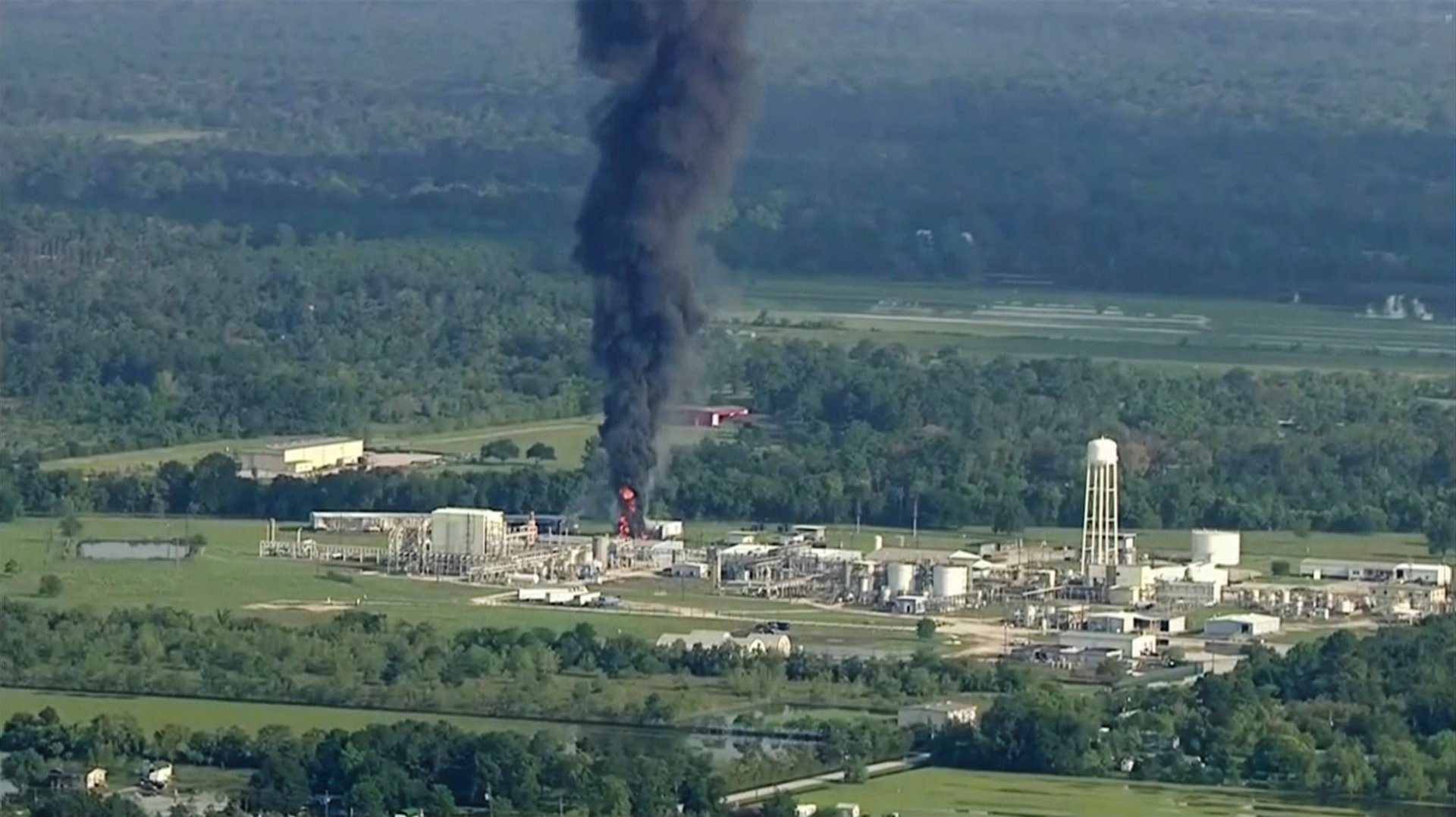It’s been a year since Hurricane Harvey triggered a toxic chemical emergency. US chemical laws are as weak as ever.
On August 31, 2017, the Arkema chemical facility in Crosby, Texas, a suburb of Houston, failed to contain the volatile compounds it housed. The 19.5 tons of organic peroxides stored on site needed to be kept refrigerated to avoid combusting but Hurricane Harvey had just inundated the facility, flooding the premises and knocking out the plant’s generators. Workers tried moving the chemicals to refrigerated trucks, but those were stalled in six feet of water.


On August 31, 2017, the Arkema chemical facility in Crosby, Texas, a suburb of Houston, failed to contain the volatile compounds it housed. The 19.5 tons of organic peroxides stored on site needed to be kept refrigerated to avoid combusting but Hurricane Harvey had just inundated the facility, flooding the premises and knocking out the plant’s generators. Workers tried moving the chemicals to refrigerated trucks, but those were stalled in six feet of water.
In the early morning, one truck exploded. An “unearthly cloud” floated out of the plant. Fifteen police officers and paramedics exposed to it were sent to the hospital. As a report from Outside magazine described it:
Some deputies were gagging; others were down on their hands and knees. “Oh my god, what’s happening?” someone said. By the time [Christy Graves, director of operations for emergency services in area] arrived on the scene, her paramedics were gasping for air, turning blue. Unable to speak in more than a croak herself, Graves tended to a thrashing, wild-eyed EMT in the back of an ambulance. The cops began to pile everyone into their service vehicles and drive away, struggling not to vomit in their laps.
No one died, but as of this month—a full year later—the cops and EMTs are “still feeling the effects,” according to Outside. “Headaches that won’t go away, fluid in their lungs, decreased respiratory capacity. They’re all still under doctors’ care.” Residents in the area say they are also still experiencing health problems they trace back to the Arkema release.
A few months before Hurricane Harvey struck—in June, 2017—the Trump administration moved to delay an Obama-era chemical-safety rule from taking effect. The government order, known as the Risk Management Program (RMP) rule, was written in response to a fertilizer-plant disaster that killed 12 people in West, Texas in 2013.
The mandate would have required chemical facilities to report what compounds were stored onsite, to inform emergency responders about the inherent risks of anything they processed or stored, and to develop emergency plans. It was finalized right at the end of the Obama presidency, and scheduled to take effect on March 14, 2017.
Nearly 177 million Americans, half the US population, live close enough to a chemical facility to be impacted in a disaster situation, according to a US Environmental Protection Agency report published in January 2017, just before Trump took office. And those Americans are disproportionately low-income and people of color.
But under Trump, the then-head of the EPA Scott Pruitt moved to delay the rule on March 13, 2017—first for a few weeks, and then, in June, until 2019. CBS news reported that Arkema was among the many chemical companies that lobbied the federal government for the delay; the plants argued that making lists of stored chemicals public would leave plants vulnerable to terrorist attacks.
Had the RMP been in force during Hurricane Harvey, first responders may have known better what chemicals, exactly, they were dealing with—and how better to protect themselves and the public.
Nothing has changed about the way chemical plants have to handle emergency planning since then. If Hurricane Harvey happened today, it is likely the exact same scenario would play out.
But there is some hope on the horizon for advocates of emergency response plans for chemical plants: Just last week, the US Court of Appeals for the District of Columbia Circuit ruled against the EPA’s decision to delay the rollout of the RMP’s safety standards, calling the original delay “arbitrary and capricious.” It was one of several blows dealt to the EPA’s deregulatory agenda in recent weeks. It is unclear how quickly chemical plants will have to comply with the Obama-era rule now that the Trump-era delay has been vacated.
But even with that court order, US chemical-plant regulation is still lacking in key areas. Even if the Obama-era RMP rule went into force, it wouldn’t explicitly take into account the future hazard of more intense or frequent flooding scenarios. Flooding like the type that inundated the Houston area during Harvey was never going to be part of Arkema’s emergency planning, even under the RMP.
The US Chemical Safety Board, a federal body that investigates chemical accidents, but cannot make rules, published a report in May 2018 noting that chemical plants, even those at risk of flooding, are not required to plan for catastrophic floods (nor would they be under the Obama-era RMP). Arkema employees at the time of the storm “appeared to be unaware” that the plant sat in a floodplain, the safety board wrote. But even if they had, no federal rule required them to do anything about it.
The board called for “more robust industry guidance” on catastrophic storm risks. If the government won’t mandate emergency planning for a future where storms are more common and floods more severe, the report urged the industry to do it themselves.
“Considering that extreme weather events are likely to increase in number and severity, the chemical industry must be prepared for worst case scenarios at their facilities,” Vanessa Allen Sutherland, the chair of the board, wrote. “We cannot stop the storms, but working together, we can mitigate the damage and avoid a future catastrophic incident.”